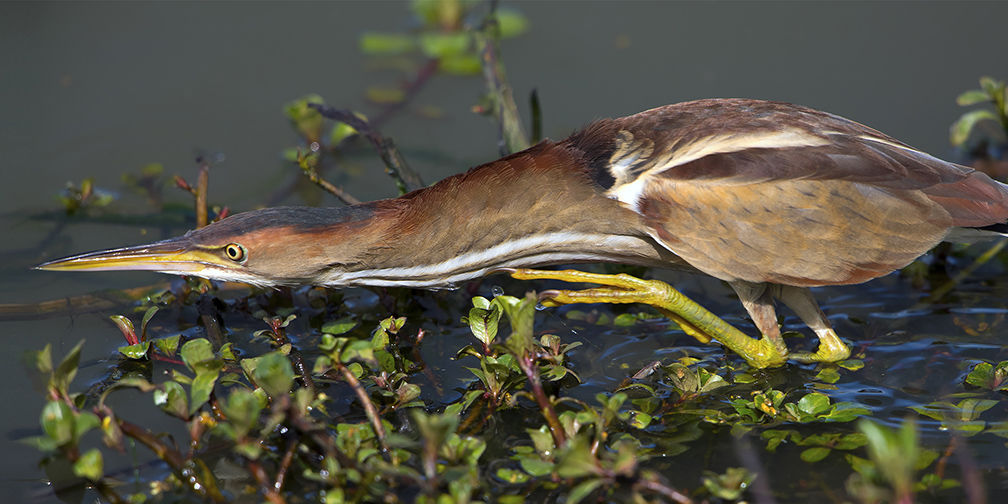Ontario Nature Blog
Receive email alerts about breaking conservation
and environmental news.
© Lora Denis
Least bittern © Craig Kempf
The first time I saw a male bobolink, I was stuck by the bird’s coloring: a sleek black face and shiny bill with a lemony yellow nape and a glistening white back. A rock star of a bird. I watched its undulating flight pattern and delighted every time the bobolink landed on the top of a low bush. The whimsical, bubbling song amused me, even though I couldn’t quite detect a melody. In any event, I was smitten.
I came home shocked to learn that this bird’s grassland and hayfield habitat is disappearing in Ontario, in large part a casualty of poor economic returns in the beef industry and current strong markets for corn and soybean crops. For some reason, I was naïve enough to think that endangered species were a thing of the past, a horrifying reality I had read about in Fred Bodsworth’s gripping novel, Last of the Curlews, where human stupidity (in the form of excessive game-hunting) and short-sightedness pushed the Eskimo curlew to extinction.
I had underestimated the precariousness of the natural world so close to home.

The bobolink is one of over 200 species at risk in Ontario. Another is the least bittern, one of the smallest herons in the world, and also one of the most difficult North American marsh birds to spot. Most birders recognize the bird by its song, a baritone, slightly monotone, staccato “coo-coo-coo”. The majority of least bitterns that breed in Canada are found here in Ontario, and yet their habitat is under severe threat due to the catastrophic loss of wetlands in the southwestern part of our province. Currently, an estimated 1,500 breeding pairs of least bitterns remain in Canada.
First listed as at risk in 1988, the least bittern is one of 65 species slated to receive habitat protection under the ESA this summer, after years and years of waiting. Yet there’s a catch. According to Dr. Anne Bell, director of conservation and education here at Ontario Nature, the Ministry of Natural Resources (MNR) is proposing to waive ESA protection requirements for a broad suite of activities that would damage or destroy the places where these species survive.
Will the government get away with creating large-scale ESA exemptions for industry? I only wish that Last of the Curlews were mandatory reading for everyone in the Legislature and in the Ministry of Natural Resources. What’s the worst that could happen if people revisited Fred Bodsworth’s brilliant prose? Who knows, the novel might just awaken the requisite collective responsibility and sense of compassion that we owe endangered species by protecting their habitats and enabling them to flourish.

Gananoque Lake Nature Reserve © Smera Sukumar